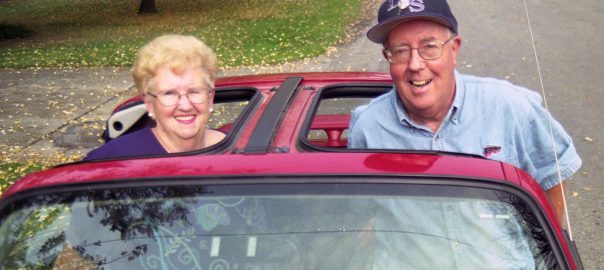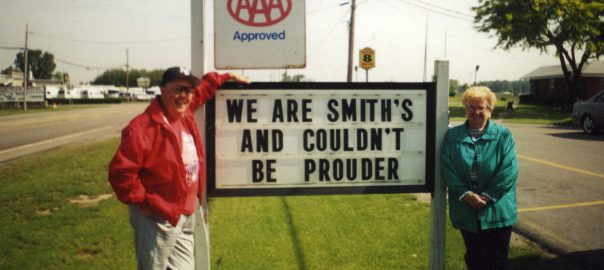It only took us 17 years, but here’s Doug & Polly Smith’s epic road-trip account of their travels down Route 62. This is the unedited version, as it is the only version we seem to have on hand in digital format. Some of the text may still contain typos left over from the OCR software we used at the time. Doug was only just beginning to enter the digital age in 1999.
By Doug and Polly Smith
Introduction
If the setting sun shone across Route 66, its shadow would he Route 62. A mystery even to those who live at its curb. Route 62 emerges from the mists of Niagara Falls to meander 2,315 miles (more or less) through 11 states to the Rio Grande at F-l Paso.
It has Northeast smokestacks, Amish farms, tobacco barns, race horses, rugged crosses, cotton fields, oil rigs, cattle drives, mountain passes and the Border Patrol. It takes two bridges to throw it across the Mississippi River.
A thoroughfare for underdogs, it has lured us all our lives.
Polly Smith, conscience of this account, has given it a name: “The Other Road-” With all deference to “The Mother Road,” anything Route 66 can do. The Other Road can do better. This is its story, and ours ..
We aimed to drive it when we were 62 but as time passed, we were paving The Other Road only with good intentions. Spurred to action by a minor health matter, we planned to transit 62 in the fall of ’99.
We checked football schedules, so as to avoid traffic at Ohio State, Kentucky and Arkansas Universities along the route. We asked a cloister of nuns (we are not Catholic) to pray that those we would meet would be glad we had come. Then, on a wet October morn, packed with clothes for three seasons, a carton of tour-guides and a medicinal bottle of Marker’s Mark bourbon, we were off. We had made just one reservation, at the Rose Hill Inn in Versailles, KY. Coming back would have to take care of itself.


